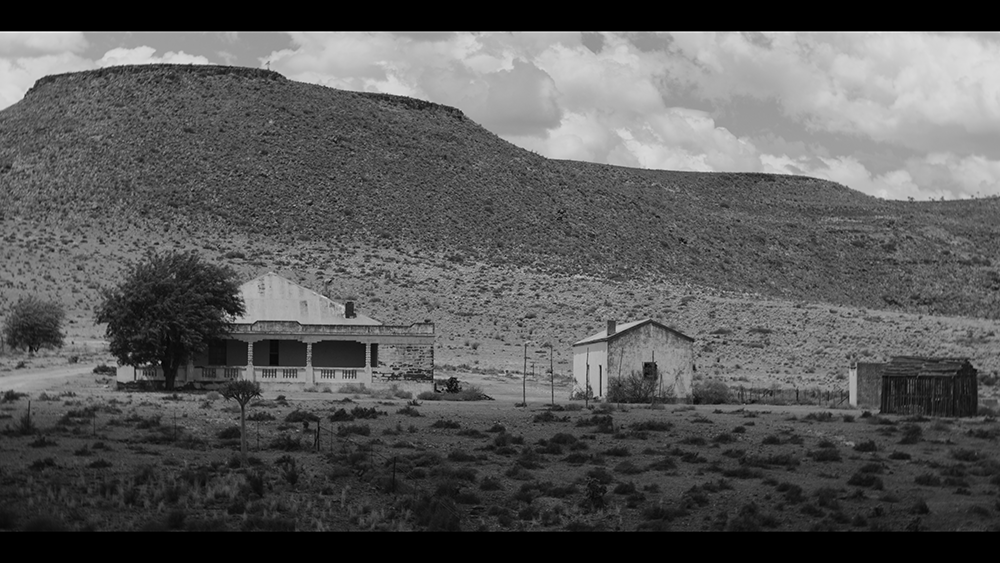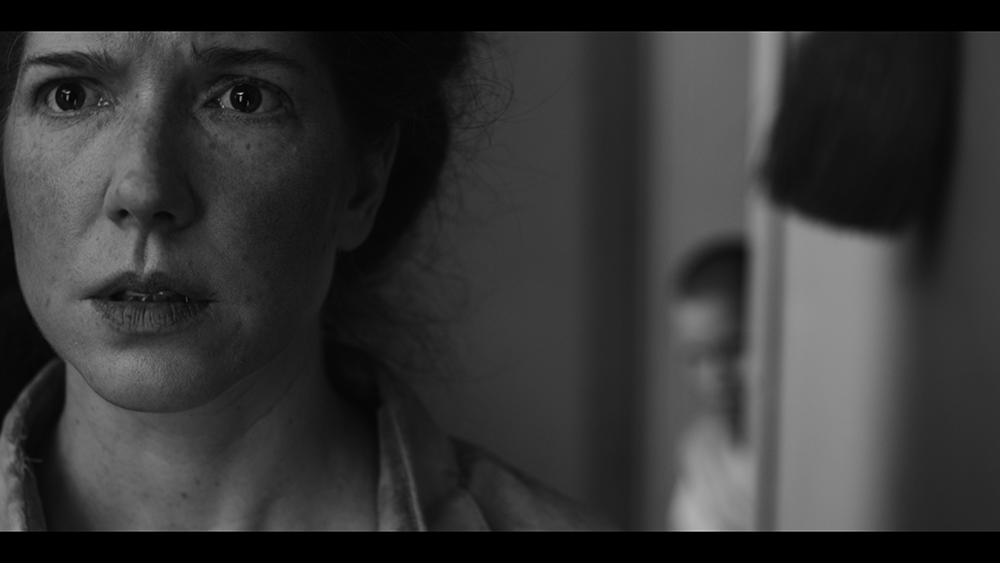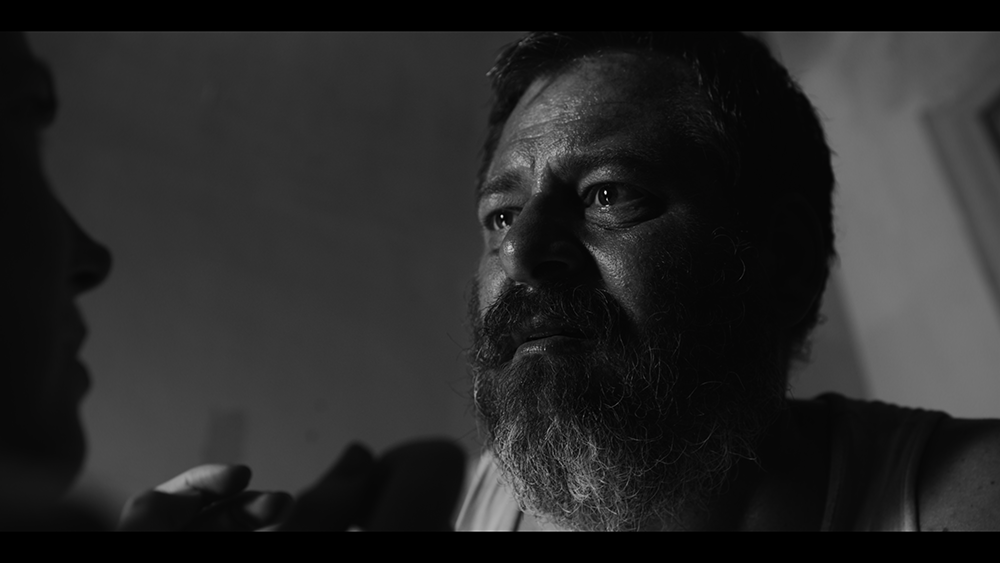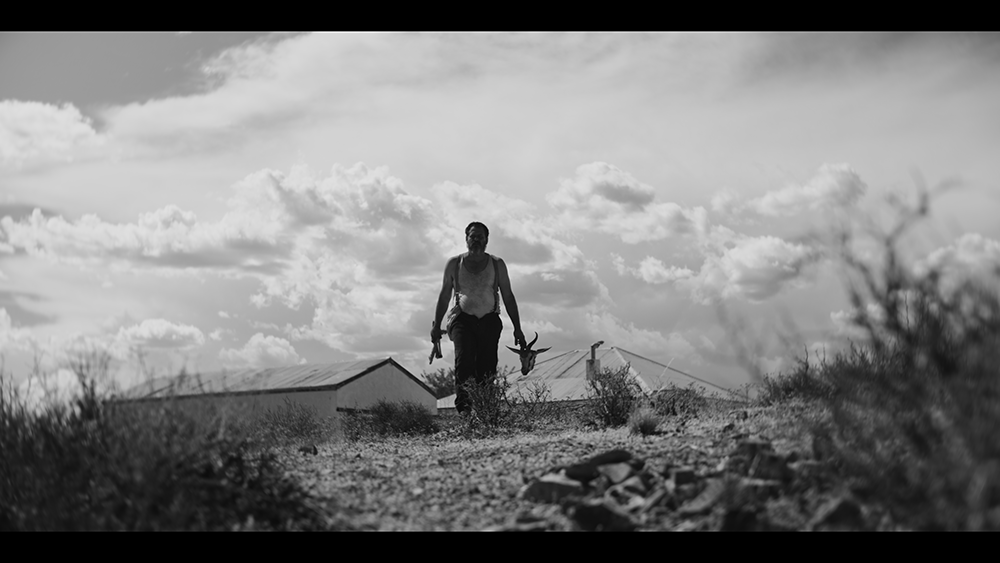



Feature Film: Hen
Hen, a new film by writer-director Nico Scheepers, is a cinematic experience that will haunt viewers long after the end credits roll. When Dawid (Stian Bam) comes across a family tragedy in the veld, he makes a shocking discovery in a wooden crate. What follows is dark, strange, and filled with uncertainty.
Nico reflects on the symbolism of chickens in the film, the role of silence, and how faith begins to take shape in isolation in ways that are both honest and unsettling.
Hen was filmed entirely in black and white – rarely seen in modern Afrikaans cinema. Beyond the visual impact, the absence of colour renders certain scenes even more disturbing. What did you hope this visual style would evoke emotionally in the viewer?
We decided very early on to film Hen in black and white. Colour would explain too much, soften too much. Gone is the warm red of blood or the sunlight that beautifies the veld. You’re left with texture, movement, and silence. It forces you to look closer. In the slaughter scene, for example, you are more attuned to the sounds, the actions, the ritual of it all. And it’s precisely the absence of colour that makes your imagination work harder. It renders the scene even more disturbing, because what you don’t see lingers more powerfully. We wanted the visual style to lend a kind of sobriety, even sanctity, to the world – as though you’re witnessing something long past, like a dream or memory you can’t shake.
We only hear the first words in Hen after 18 minutes. That extended silence creates a sense of tension, reverence, and even dread. What led you to delay dialogue for so long, and what role does silence play in the film’s emotional and psychological landscape?
I think silence is a powerful tool in a film like this. There’s tension in silence. Anticipation. Peace. Foreboding. This film was an attempt to use the texture of sound and visuals to tell the story, rather than relying on dialogue. I find the silence of isolation far more terrifying than a jump scare. There’s a big difference between a cheap physical fright and something that slowly bores into your head like a maggot.
How did you approach the presence of religion in Hen, and what did you want to explore about its influence on this family’s reality?
Faith in Hen is not just a thematic thread – it’s a force field. Something that has shaped the Afrikaner psyche for generations. In our culture, religion hasn’t only functioned as a spiritual anchor but also as a social structurer – it has defined what is good and bad, healthy and sinful. But in Hen, those structures have begun to crumble. What remains is a cut-off family trying to cling to anything that offers meaning – even if it’s broken, jumbled, or out of place.
The image of an Afrikaans man praying before a Catholic crucifix is part of that crumbling. It’s neither purely Protestant nor Catholic, but something syncretic, raw, even primitive. A faith rediscovering itself in isolation. It shows how, in a remote post-apocalyptic world, belief is no longer tied to church dogma, but to the need for meaning, protection, and forgiveness.
I wanted to show how people in isolation start building their own liturgy – a hybrid of memory, tradition, guilt, and hope. They cling to the crates and crosses of the past not because they still fully understand them, but because they have nothing else. That faith is not just a structure – it’s a last support. And it brings both healing and harm.
Hen begins as a straightforward rescue story and slowly transforms into something animalistic and mythical. How did you structure that tonal shift, and what reaction did you hope to elicit from the audience?
The film doesn’t follow a traditional (Hollywood) structure. The conflict emerges from a slow dismantling of the audience’s expectations. I wanted to create something like a long strand of barbed wire being pulled tighter and tighter until it finally snaps – and perhaps doesn’t offer all the answers people expect.
The shift from spiritual to primal is, for me, inseparable from everyday human existence. Deep down, we are all animals. We think, eat, love, and destroy because it’s in our nature. Hen shows what happens when all the guards at the gates disappear.
The chickens in Hen are more than just background. What led you to choose the hen as the central image and title, and how does that symbolism evolve throughout the film?
I grew up on a farm and wanted to explore the negotiation between life and death that happens in the farmyard. I was taught from a young age to kill, because we had to eat. I don’t carry trauma over it – I still enjoy meat in all its forms. It’s biltong’s fault that I’ll never be a vegetarian. But that contract with survival – how easy it is to pull the trigger … to slice a throat … to laugh with a full belly, blind to the death your hands just brought because you’re fed – I find that fascinating.
I ultimately chose chickens because of the inherent symbolism: eggs and birth, claws and feathers, mothers and children – allowing for effortless parallels with the cyclical nature of farm life.
